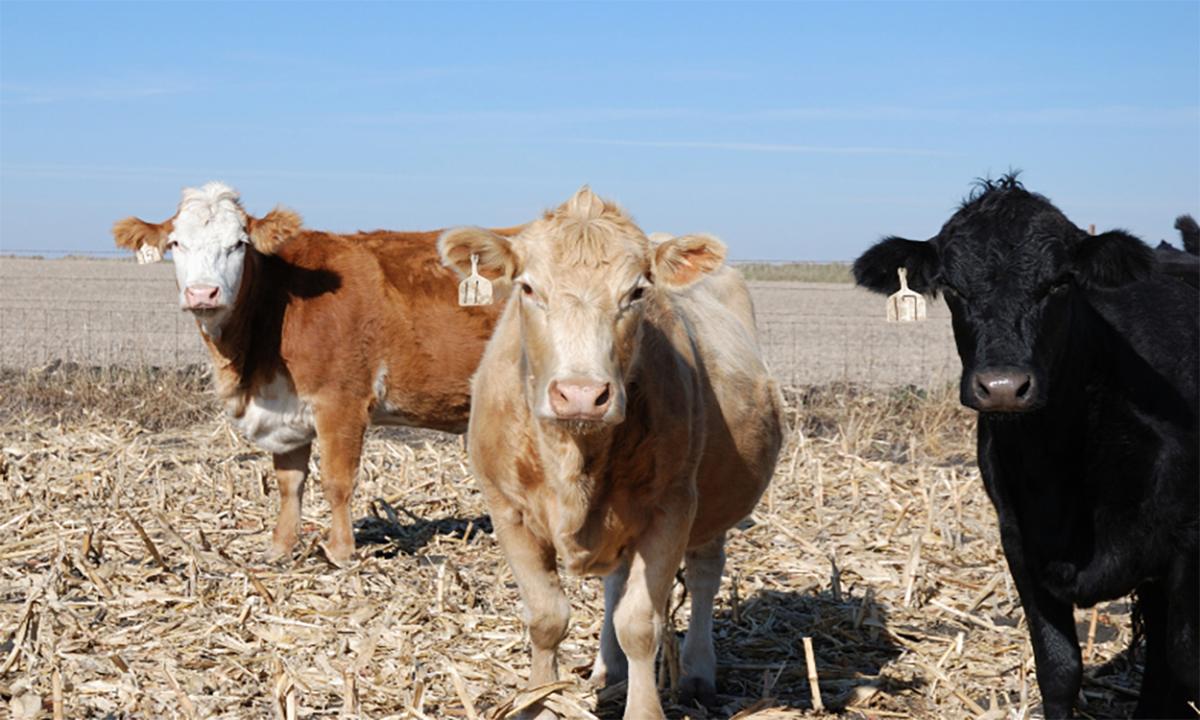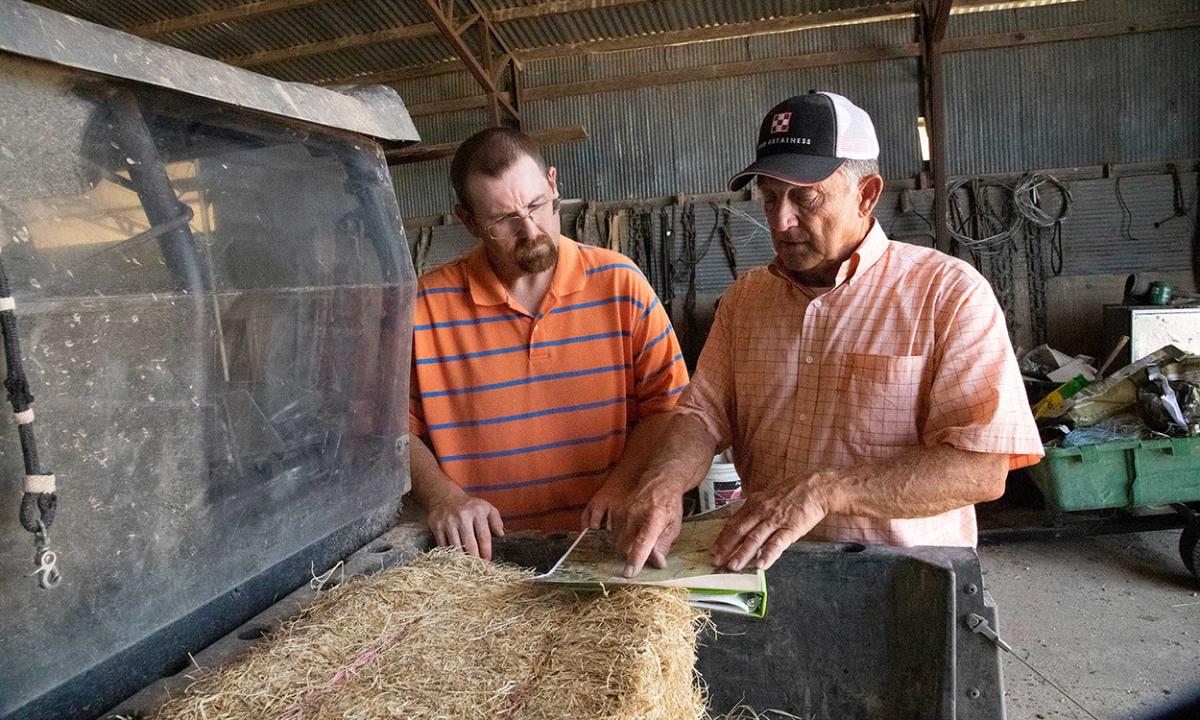Corn stalk acres have long been a source of feed for livestock producers. Grazing corn stalks has many benefits for the ground and the cattle. The most obvious is the utilization of corn that fell off the stalk. Not only does this provide an energy source for the cow, but it also helps prevent volunteer corn in the field the following growing season. Cows also return nutrients to the soil as they graze and work some of the residue and manure into the soil.
Things to Consider
The University of Nebraska and Iowa State University have done multi-year research to evaluate compaction concerns from grazing. The results of these studies have found minimal to no compaction issues depending on tillage systems. They also reported limited compaction on frozen ground, so removing the cows before spring thaws will help mitigate that concern.
Stover removal is another consideration to evaluate. High-yielding corn can leave up to 5 tons of residue per acre. That is a lot of stover to break down over the winter. By grazing the stalks, some of this residue can be removed, allowing the soil to dry and warm sooner next spring. Grazing for a limited amount of time allows the cattle to clean up dropped ears and some of the leaves and husks, while leaving a percentage that will become organic matter in the soil.

Things to Consider
The University of Nebraska and Iowa State University have done multi-year research to evaluate compaction concerns from grazing. The results of these studies have found minimal to no compaction issues depending on tillage systems. They also reported limited compaction on frozen ground, so removing the cows before spring thaws will help mitigate that concern.
Stover removal is another consideration to evaluate. High-yielding corn can leave up to 5 tons of residue per acre. That is a lot of stover to break down over the winter. By grazing the stalks, some of this residue can be removed, allowing the soil to dry and warm sooner next spring. Grazing for a limited amount of time allows the cattle to clean up dropped ears and some of the leaves and husks, while leaving a percentage that will become organic matter in the soil.
Developing a Rental Agreement
Determining a rental agreement for corn stalks can be looked at in two ways: per acre or per animal per day. Data is hard to find on what corn stalk fields are rented at. It has been a common practice in South Dakota to rent at a per acre or a per head per day rate. Choosing one method over the other comes down to owner preference. One consideration for the per head per day rate is winter weather. Using this method, the cow owner only pays for the days the animals can utilize the field. Winter weather may shorten the anticipated grazing period by freezing water sources or covering the feed with snow.
Rates may vary from $1.00 to $10.00 per acre if the animals will be on the field for an extended period or $0.50 to $2.00 per head per day, depending on the feed available. The following list contains factors to consider when determining a corn stalk rental rate.
Rental Rate Factors
- Amount of corn left in the field.
High-yielding corn will have more leaves, husks, stalks, and corn in the field, thus increasing the amount of feed available. - Length of time for grazing.
Considerations for snow covering the available fodder may change the grazing rate from a per acre to a per day rate. - Stocking rate.
Mob grazing for a short period versus long-term grazing can change the method used.
- Fences.
A permanent fence is always preferred; however, many cornfields must be fenced with electric wire. This reduces the rental rate, as time is needed to put up and remove the fence. - Water availability.
The animals will need access to water daily. Will water need to be hauled to the field? Is there a rural water tap, or is a stock dam available? Those questions need to be considered and affect the rental rate.

Final Paperwork
Fields with good fences and water are generally rented at a slightly higher rate. Rural water taps have been put in many pastures and fields. If this option is utilized, the water is paid in addition to the rental rate.
Regardless of the rate or method used, a good rental agreement should be written down and signed by all parties. This ensures everyone understands what the terms of the agreement are.
The agreement can be as formal as using a rental agreement contract or informal as written on a blank sheet of paper. The important part is that it is written down, and both parties have a copy.
Source : sdstate.edu